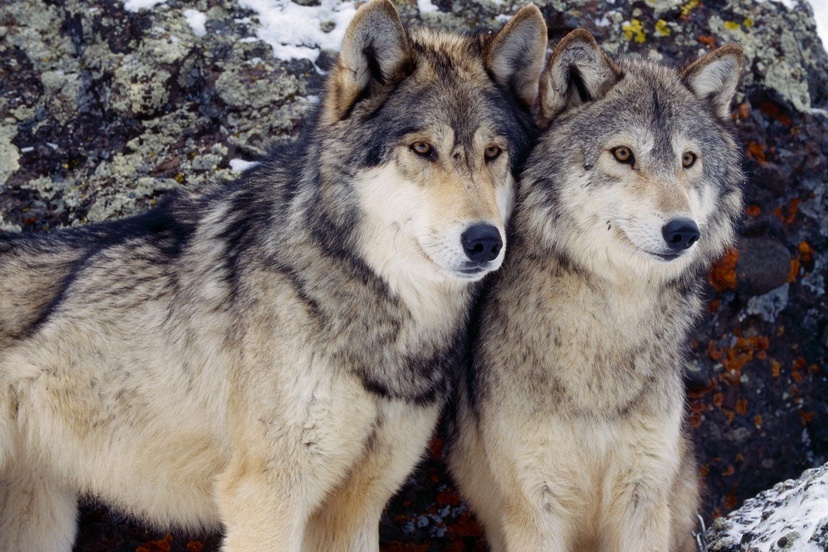Colorado Parks and Wildlife has confirmed successful reproduction in its gray wolf reintroduction efforts in the state.
CPW biologists have been gathering evidence suggesting a male and female gray wolf pair have been denning, indicating reproduction. Some of this evidence includes GPS collar data.
The collared female’s GPS points stopped uploading in early April, and resumed uploading later in April. The points for the female’s collar showed a very localized position. CPW biologists interpreted this to mean that she was likely in a den, and therefore not in communication with the satellites, during the time when connectivity with the collar was interrupted, which aligned with the expected timing of wolf reproduction.
At that point, CPW staff began diligently working to confirm the den and whether pups are present.
On June 18, CPW biologists confirmed one wolf pup in Grand County. The confirmation occurred during routine wolf monitoring efforts, which included attempted observations from the air and ground, remote cameras, public sightings, etc. There are no photos or videos at this time. Although biologists were only able to confirm one pup at this time, it is possible that other pups may be present, as wolf litters commonly consist of four to six pups. CPW staff will continue to monitor the animals to determine how many pups have been born to the litter.
Because these wolves have successfully reproduced, they are officially considered a pack. The pack name is the Copper Creek Pack. This is the first confirmed Colorado-born wolf pup since the voter-approved wolf reintroduction in December.
“We are continuing to actively monitor this area while exercising extreme caution to avoid inadvertently disturbing the adult wolves, this pup, or other pups,” said CPW Wildlife Biologist Brenna Cassidy.
CPW biologists and area staff will continue to monitor this pack. Staff will continue to work with landowners in the area to implement practices to minimize the potential for conflict.
For additional information on how to stay informed about wolves in Colorado, visit cpw.state.co.us and sign up for our Gray Wolf Reintroduction eNews.
When is the breeding season?
Wolves breed once a year during the late winter months, typically mid- to late February.
When do wolves start denning?
Wolf gestation is about 63 days, so typically start denning in mid- to late April. They frequently reuse dens, with sites varying across habitats. Before the arrival of pups, dens are cleaned, remodeled, and often expanded in preparation. Wolves will dig their own den, but can also expand an existing hole abandoned by a coyote, badger or other animal. Wolves may vacate a den if disturbed and relocate to a new site.
When are pups born? How and when will we know if there are pups?
On average, females give birth for the first time between two and five years of age. After a gestation period of about two months, pups are born in the spring which coincides with the time local ungulates give birth, enabling wolves to take advantage of easier prey. Pups grow quickly between five and 10 weeks, becoming more physically capable and socially interactive. In early or mid summer, pups are usually moved to an aboveground “rendezvous site,” an area pups stay with access to resources like water and shelter. Wolves can use one or multiple rendezvous sites per year, depending on access to resources and level of disturbance.
How will we know when pups are present?
CPW staff will diligently monitor wolf locations and behavior to determine if wolves are denning. Depending on location and terrain, it can take weeks or months to determine if wolves have denned.
What is an average number of pups?
Females can give birth to as little as one or as many as 11 pups, with the average litter size falling between four and six pups. Pup survival rates vary widely by location and are difficult to study, but around half, or slightly more, of pups born often make it through their first year of life.
When do wolves disperse?
Wolves have been known to disperse as young as nine months, but most wait until they are between one and two years old. While both males and females can leave their natal packs, males are more likely to disperse. Dispersing wolves may spend a few months to a few years by themselves before being able to form new packs with other dispersers or join an established pack.
How long do wolves live?
While captive wolves can live more than 10 years, wild wolves usually only survive 3-4 years.
Are the wolves from Oregon old enough to breed?
Wolves can breed at almost two years old. All wolves known to be in Colorado were capable of breeding in February 2024.

